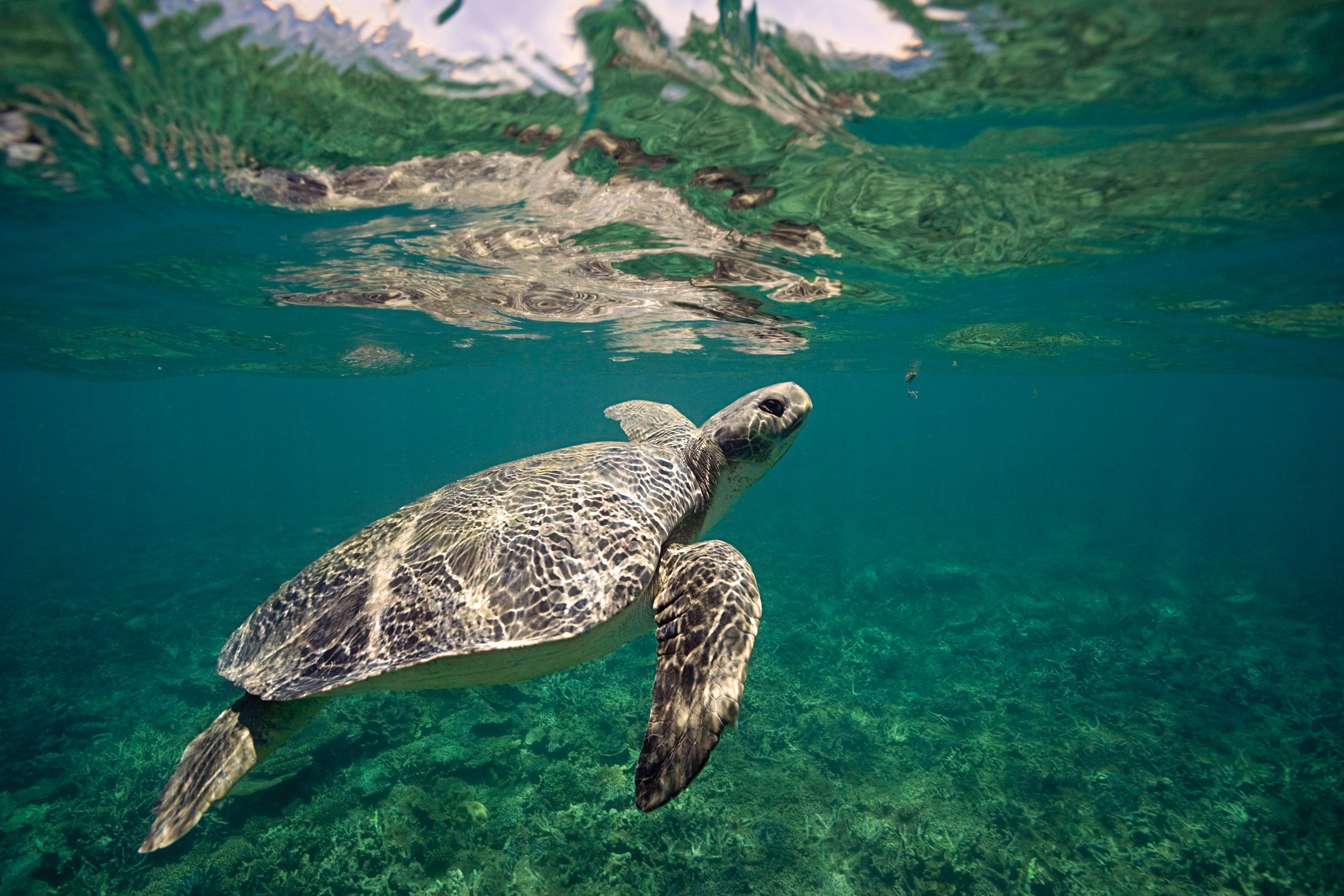How Do Sea Turtles Sense Their Environment?
By Samantha Trail and Jeanette Wyneken
A flatback turtle, endemic to Australia, rises toward the surface to breathe. Scientists continue to learn more about how sea turtles sense their environment, from what they see and smell to how they feel pain. © Doug Perrine
Sea turtles live mostly in the ocean, though they spend brief portions of their lives on nesting beaches as hatchlings or adult females (learn about the sea turtle life cycle). Science is beginning to understand what external stimuli are important to them in the different environments.
VISION—With relatively small eyes for their large body size, sea turtles do not initially appear to have stunning visual capabilities. Indeed, they have low visual acuity (spatial resolution), “slow” temporal resolution, and eye structures that are best suited for the kinds of bright light conditions found on the shade-free ocean surface, where they spend much of their time. When sea turtles are on land, most of their activity is at night, when sea-finding and nest site selection occur. Sea turtles do have color vision and can sense the shorter, near-UV light wavelengths emitted from the stars and moon that humans do not see. Hatchlings use those dim light cues to crawl toward the sea from the nest, and adult females respond to such cues during nest site selection, which is why artificial lights on nesting beaches pose a threat to sea turtles.
HEARING—Sea turtles do not have an external ear, but they do possess a tympanum (eardrum), a middle ear bone (stapes), and an inner ear, within which the basilar papillae (hairlike filaments) detect sounds. In both aquatic and terrestrial environments, regardless of life stage, sea turtles are especially sensitive to low sound frequencies, with maximum sensitivity at or below 400 Hz; for perspective, humans hear sounds ranging from 20 Hz to 20,000 Hz. Why sea turtles are so sensitive to such low frequencies is unknown, but such sounds are more prevalent in underwater environments and can travel long distances, which could be advantageous. Unfortunately, sea turtles ignore continuous sounds, such as those emitted by approaching powerboats, and consequently they are often injured or killed during collisions with vessels.
CHEMORECEPTION—Smell and taste are often associated with food detection in many animals, and sea turtles are no exception. In the presence of the odors and of the chemical dimethyl sulfide (a byproduct of injured prey), sea turtles will show foraging behavior (diving, biting, an increase in swimming speed). Yet visual cues appear to be the primary way food is detected at close range, while smell may play a role in orientation toward distant foraging areas.
MAGNETORECEPTION—Cues used by sea turtles for migrating to distant goals depend, at least in part, on an ability to detect two properties of the Earth’s magnetic field: strength and inclination angle (to learn more, see How do Sea Turtles Navigate in the Ocean?). Those two features combine to create a sort of GPS sense that allows emerging hatchlings to navigate to distant nursery areas and to return, as adults, to their natal nesting regions.
Science continues to search for what sea turtle sensory systems are able to detect and perceive. Lab studies have attempted to identify what their sensory receptors detect. Yet detection is not perception. For example, light wavelengths and intensities that sea turtles behaviorally respond to (perception) during sea-finding is only a small subset of what their eyes are physiologically capable of responding to in lab experiments (detection). Similarly, the neural processes that respond to noxious stimuli, such as pain (nociception), only trigger defensive behavior if the stimulus is perceived. How sea turtles feel pain remains inferred from humans’ perceptions rather than understood from the turtles.
This article originally appeared in SWOT Report, vol. 18 (2023). Click here to download the complete article as a PDF.

